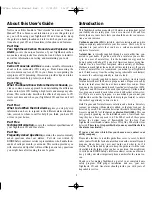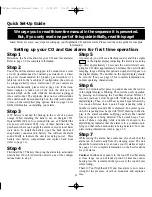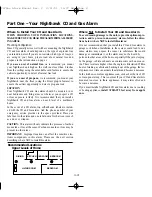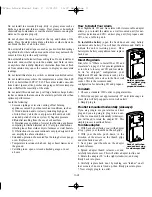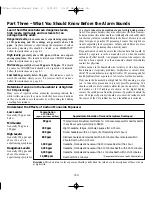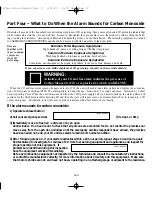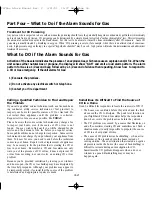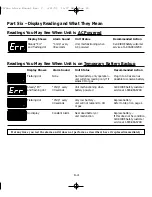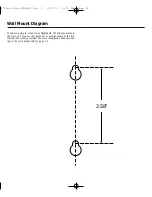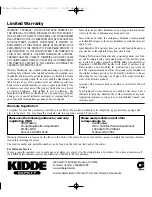
Part Two – Carbon Monoxide and Gas
Home Safety Tips
What You Can Do...
• Buy only appliances approved by a nationally recognized
testing laboratory.
• Choose fuel-burning appliances that can be vented to
the outdoors, whenever possible.
• Make sure appliances are installed according to
manufacturer’s instructions and local building codes.
Most appliances should be installed by professionals and
should be inspected by the proper authority after
installation.
• Have the heating system, vents, chimney and flue
inspected and cleaned by a qualified technician every year.
• Follow manufacturer’s directions for safe operation of all
fuel-burning appliances.
• Examine vents and chimneys regularly for improper
connections, visible rust or stains.
• Open a window when a fireplace or wood-burning stove
is in use, and provide adequate outdoor air for furnace
and water heater.
• Notice problems that could indicate improper appliance
operation:
– Decreasing hot water supply
– Furnace unable to heat house or runs constantly
– Sooting, especially on appliances
– Unfamiliar or burning odor
– Yellow or orange flame
• Be aware of the symptoms of carbon monoxide poisoning:
– headaches, dizziness, weakness, sleepiness, nausea,
vomiting, confusion and disorientation.
• Recognize that CO poisoning may be the cause when
family members suffer from flu-like symptoms that don’t
disappear but improve when they leave home for
extended periods of time.
What You Should Not Do...
• Never burn charcoal inside a home, garage, cabin, RV or
camper.
• Never install, service, or convert fuel-burning
appliances from one type to another without proper
knowledge, skills and tools.
• Never use a Gas range, oven, or clothes dryer for heating.
• Never operate unvented Gas-burning appliances, such as
kerosene or natural Gas space heaters, in a closed room.
• Never operate Gasoline-powered engines (like vehicles,
motorcycles, lawn mowers, yard equipment or power tools)
in confined areas such as garages or basements,
even if
an
outside door or window is open.
• Never ignore a safety device when it shuts off an appliance.
• Never ignore a CO alarm or Gas alarm.
Be Aware of the Warning Signs of Carbon
Monoxide: Clues You Can See...
• Streaks of carbon or soot around the service door of your
fuel-burning appliances.
• A yellow or orange flame may indicate a problem with
natural Gas appliances.
• Excessive rusting on flue pipes or appliance jackets.
• Loose or missing furnace panel.
• Moisture collecting on the windows and walls of furnace
rooms.
• Loose or disconnected vent/chimney, fireplace or appliance.
• Small amounts of water leaking from the base of the
chimney, vent or flue pipe.
• Rust on the portion of the vent pipe visible from outside
your home.
• The absence of a draft in your chimney (indicating
blockage).
• Fallen soot from the fireplace chimney.
• Loose, damaged or discolored bricks on your chimney.
Clues You Cannot See...
• Internal appliance damage or malfunctioning components
• Improper burner adjustment
• Hidden blockage or damage in chimneys
2-2
CO/Gas Alarm Manual Rev. C 3/21/01 11:37 AM Page 15



